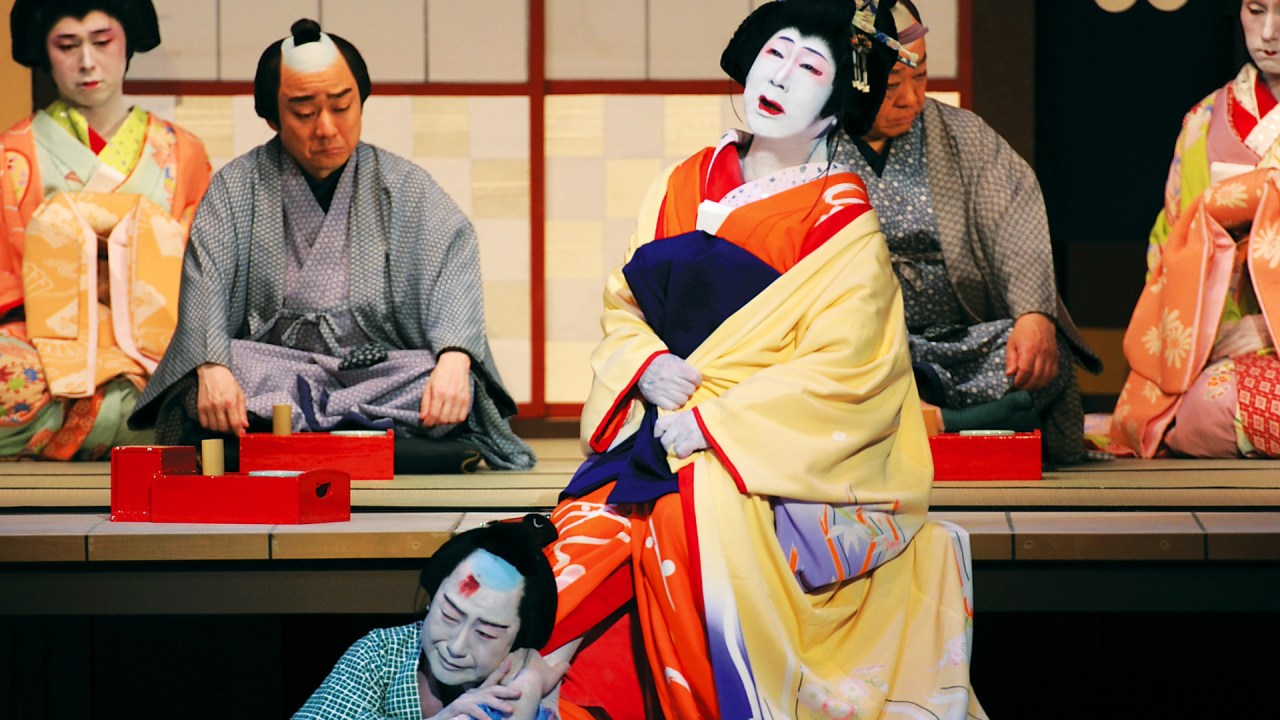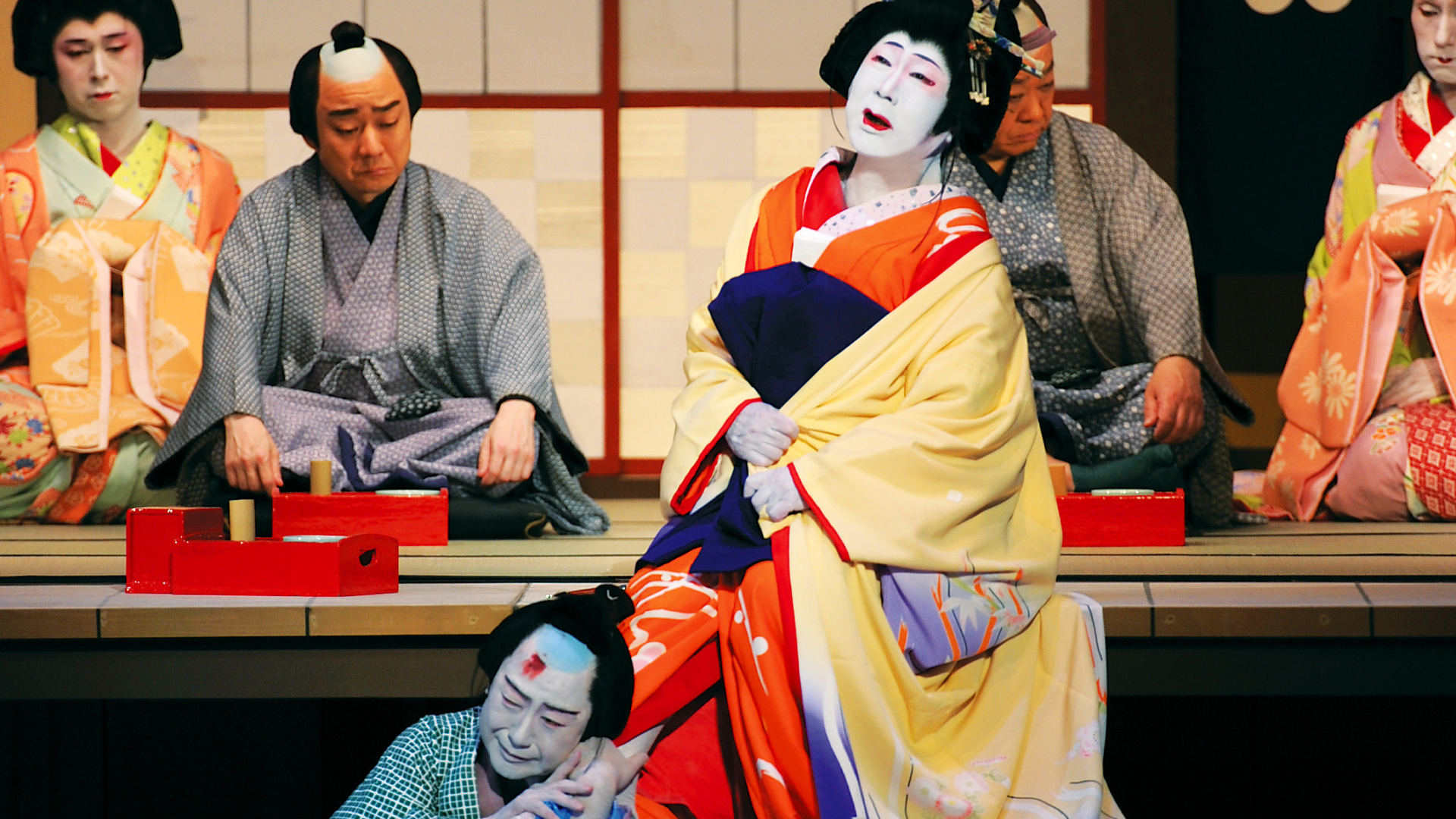It’s a long climb up the 1,368 steps to the Shinto shrine at Kotohira. Many of the pilgrims are making comfort stops at the countless teahouses that line the route, but other worshippers break their journey at Kanamaru-za, the oldest surviving kabuki theatre in Japan.
A middle-aged man in Barbara Cartland war paint, heavy black wig and kimono ought to be ridiculous
Kabuki, with its vivid stock characters, juicy plots and sumptuous costumes, has always been the most popular and accessible of the Japanese theatrical traditions. In the early 17th century performances featured both sexes, but in 1629 the ruling shogunate decreed that actresses (many of them prostitutes) were a danger to public morals and the art form became – and remained – an all-male preserve. A middle-aged man in Barbara Cartland war paint, heavy black wig and lavender kimono ought to be ridiculous but the kabuki heroine is a magical creature and a great onnagata (a male actor playing a female role) will transcend the conventions and carry you away to the floating world.
Sadly, Kotohira is fresh out of onnagata in June. Kanamaru-za is dark for 50 weeks of the year, coming alive for only a fortnight each spring, but the handsome wooden building is well worth the detour. It was originally crowd-funded into being in 1835 by a gang of local geishas who systematically short-changed their clientele until they had amassed the necessary cash. Like most old Japanese buildings, though, it is a lot newer than it looks, having been lovingly restored in 1976 using close-grained Japanese cypress and set out in the traditional masuseki style with spectators corralled into groups of four separated by low wooden rails. Spending four, maybe five hours on a thin cushion is no picnic but the kabuki stars who travel down to Kotohira every April relish the retro atmosphere: ‘Sitting on the floor, eating and drinking sake? It’s the origins of kabuki,’ smiles Nakamura Ganjiro IV, who regularly features in the spring festival.








Comments
Join the debate for just £1 a month
Be part of the conversation with other Spectator readers by getting your first three months for £3.
UNLOCK ACCESS Just £1 a monthAlready a subscriber? Log in